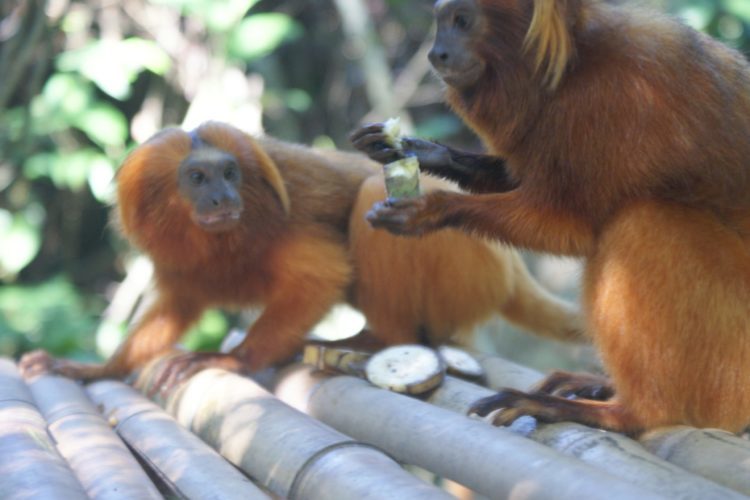Sharing food aids monkey business
It may be only a shared banana in a tree, but the latest research from the University of St Andrews suggests this sharing of food between monkeys could be the equivalent of humans taking a prospective date out to dinner.
Food transfers between adults are rare in primates with most transfers only occurring between mothers and their offspring, according to the research published today in Primates.
But now, an expert at the University of St Andrews has reported the first six recorded events of food transfers in wild golden lion tamarins between adults of different groups, suggesting golden lion tamarins may have a more complex and flexible social life than previously thought.

The observations suggest an additional function of food transfer in this species: to create and strengthen social relationships outside of the family group.
Lead researcher Camille Troisi, of the Centre for Social Learning and Cognitive Evolution in the School of Biology at the University of St Andrews, said: “Given that individuals emigrate from their natal group to find opportunities to reproduce, I suggest that those food transfers could be a way for individuals to estimate the quality or availability of potential mates or social partners.
“Although the function of food transfers between groups is not fully understood, and requires more experimental work, the six observations reported here contribute to our understanding of the flexibility of social behaviour in primates.”
Golden lion tamarins are a unique species, not only in terms of the large number of food transfers to juveniles, but also for the prevalence of transfers that are initiated by the adults, as well as for the food they transfer to other adult group members, especially pregnant females.
Those food transfers can provide nutrition to the ones receiving food, but also information about what foods are good to eat. Previously, providing nutrition and information had been regarded as the two main functions of food transfers in tamarins. However, these new observations suggest that there may be a third one: to create social connections.
All food transfers in primates, so far, have been observed to happen between individuals of the same group, except for bonobos where researchers recently reported an observation of an individual sharing food with members of its own group as well as with members of the neighbouring community.
Watch video footage of the food-sharing tamarins online.
The paper, ‘Intergroup food transfers in wild golden lion tamarins’, by Camille Troisi is published in Primates and available online.
Please use the paper’s DOI (10.1007/s10329-020-00846-x) in all references and cite Primates as the source.
Issued by the University of St Andrews Communications Office.